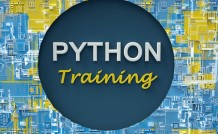Cybersecurity 101
Empower Your Digital Defense: Master the Basics of Cybersecurity!

6 Hours average completion time
0.6 CEUs
15 Lessons
20 Exams & Assignments
147 Discussions
15 Videos
48 Reference Files
116 Articles
Mobile Friendly
Last Updated December 2025
Cybersecurity Fundamentals: Safeguarding the Digital Frontier
In an era where the digital realm is deeply intertwined with our daily lives, the value of robust cybersecurity cannot be overstated. It stands as the fortress between our invaluable data and the incessant tide of cyber threats, ensuring the sanctity of our digital identities, assets, and the very fabric of our businesses. It's not just about defending from threats--it's about building a resilient, agile digital world.
Welcome to our comprehensive course on cybersecurity fundamentals--a meticulously designed portal to the world of digital safeguarding. Perfect for novices with an eagerness to delve into the realm of cybersecurity, this course offers a holistic exploration of the field, setting you on the path of becoming a sought-after professional in an ever-evolving industry.
Dive into a plethora of topics that will arm you with the knowledge you need:
- The Digital Blueprint: Understand the intricate hardware underpinning computer networks and the nuances of network design.
- Communication Codex: Master the essence of TCP/IP, get acquainted with common TCP protocols, and grasp the significance of port numbers.
- Wireless Wisdom: Equip yourself with best practices for securing wireless networks and ensuring the safety of remote users.
- Subnet Savvy: Demystify the realm of subnetting and the principles of network administration.
- Threat Landscape: From cyberattacks to wireless breaches, application onslaughts to injection attacks--know your enemy, their tactics, and their weaknesses.
- Social Engineering: Unmask the deceptive world of phishing and its kin, learning how to spot and stop these cunning threats.
- Test & Triumph: Understand the intricacies of penetration testing, vulnerability assessment, and refine your defense mechanisms.
- Crypto Corner: Embark on the cryptic journey of encryption and cryptography, the coded guardians of our data.
Unlike traditional courses, we ensure a seamless learning experience, free from the hassles of acquiring special software or equipment. While our primary objective isn't to prime you for specific certification exams, we lay a solid foundation upon which you can build, be it for further advanced studies or kickstarting a rewarding career in this crucial domain.
Enroll today and embark on a riveting journey to decipher, defend, and dominate the cyber realm. With every module, you'll be one step closer to becoming the vanguard of the digital world. Join us and be a beacon of security in the vast expanse of cyberspace.
- Integrate secure system practices
- Conduct incident handling and digital investigations
- Manage risk and establish security policies
- Employ modern encryption techniques
- Comprehend cybersecurity fundamentals
- Develop resilient security awareness
- Strengthen application security measures
- Identify and assess cyber threats
- Implement effective network security strategies
-

Python Programming 101
-

Google Analytics 101
-

Developing Great Social Skills
-

Computer Literacy Level 1 - Computer Basics
-

Final Cut Pro X
-

MySQL
-

Kaizen 101 - An Introduction
-

Learn HTML - Create Webpages Using HTML5
-

OS X Yosemite
-

Adobe After Effects
-

Lifetime Wellness 101
-

Basic Parenting Skills
-

Adobe Photoshop
-

Pinterest
-

Computer Literacy Level 3 - Living and Working Online
-

Introduction to SQL
-

Google Docs
-

Cybersecurity 101
-

Adobe Dreamweaver
-

Adobe Illustrator
-

Photoshop Elements 101
-

ESL Grammar Skills Level 5
-

Introduction to CSS
-

Etiquette 101
-

QuickBooks 101